The core of confrontation posed by the emerging Information Society is the theory of universal service; and how the freedom of information and right to communicate would further evolve. According to UN Charter 1947 Article 19 of ‘Universal Declaration of Human Rights 1948’; which states that everyone has a right to, “hold opinions without interference and to seek, receive and impart information and ideas through any media and regardless of frontiers”.
The future of today’s information age largely depends on the liberty of opportunities inhabitants have to access ICTs and their ability to employ them. Apart from its increasing importance in bringing the world close ICTs have cemented a new way for the challenged people—physically or mentally—to enhance their life experiences.
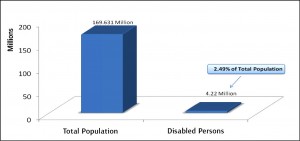
According to World Health Organization “An impairment is any loss or abnormality of psychological or anatomical structure or function; a disability is any restriction or lack (resulting from an impairment) of ability to perform an activity in the manner or within the range considered normal for a human being; a handicap is a disadvantage for a given individual, resulting from an impairment or a disability, that prevents the fulfillment of a role that is considered normal (depending on age, sex and social and cultural factors) for that individual”. According to global statistics presently around 10 per cent of the total world’s population, or roughly 650 million people, live with a disability.
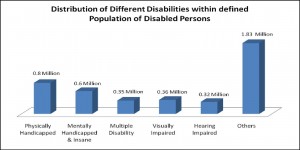
The major issues confronted by disabled people with respect to ICTs are “accessibility” and “ease of use”. People with different disabilities may not be capable of accessing and utilizing ICTs such as a blind person may not be able to use mobile phone with no text-to-speech capability, a deaf person may not communicate with the emergency services requiring spoken conversation, a physical disable person may not respond to a website using mouse-clicks, online videos may not be usable by blind and deaf people and people with cognitive disabilities may not view an different pages of a website properly.
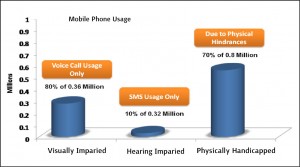
In order to facilitate ICTs accessibility to disabled people, various economies and International institutes have introduced special e-accessibility projects along with special guidelines. United States passed an exclusive ‘Convention on the Rights of Persons with Disabilities and its Optional Protocol’ adopted on 13 December 2006 at the United Nations Headquarters in New York signed by 82 signatories.
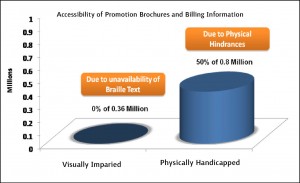
The USA has an extensive array of e-Accessibility related legislation and regulations, and is the international forerunner in this regard. Notable aspects include the Americans with Disabilities Act (e-Accessibility of various services), Section 255 of the Telecommunications Act (accessibility of telecoms equipment and services), and Section 508 of the Rehabilitation Act (accessibility in federal procurements of ICTs). A number of e-Accessibility measures in Australia are underpinned by the Disability Discrimination Act which prohibits discrimination in relation to employment, education and provision of both public and private services. This has led to measures to improve website, telecommunications, broadcasting and financial services accessibility. In Denmark, under the Universal Service Obligation (USO), special telecommunications services must be made available to certain defined groups of disabled persons (Act on Competitive Conditions and Consumer Interests in the Telecommunications Market – Consolidated Act No.780 of 28 June 2007).
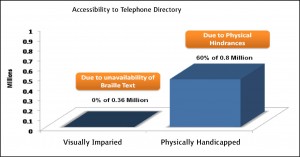
The World Wide Web Consortium (W3C) is an International community that develops standards to ensure the long-term growth of the Web. The W3C has initiated a special Web Accessibility Initiative (WAI) that aims to bring together people from industry, disability organizations, government, and research labs from around the world to develop guidelines and resources to help make the Web accessible to people with disabilities including auditory, cognitive, neurological, physical, speech, and visual disabilities.
Pakistan is a country of 169 million people having 2.49% as disabled population. The distributions of different disabilities within the defined population of disabled persons are shown in below figures.
Detail statistics of present accessibility status with and usage of various telecom services and devices by the disabled persons has been analyzed and presented here.
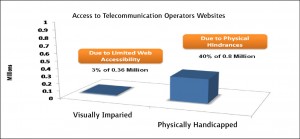
With regards to mobile phone usage approximately 80% of the visually impaired people are able to access only voice call facility of mobile phones, whereas, 10% of hearing impaired persons are just able to use SMS service, One of the main reason of lower usage by the hearing impaired persons is unavailability of text relay service to facilitate text-to-speech and vice versa service. 30% of the physically handicapped people are not able to use mobile phone services primarily due to devices design.
As observed from the environment around us, the advertisement and promotion brochure of telecom companies greatly impact the minds of people and compel them to use particular telecom service or package of a particular service provider. But so far these advertisement materials and other documents such as bills, registration forms and other packages information brochures of telecom companies are not fully accessible to the disabled person especially to visually impaired persons. Unavailability of Braille text in the document prevent visually impaired person to read any printed promotional material or billing information for ICT services.
Similarly access to telephone directory being offered for searching particular contact information. Disabled persons again have not been properly facilitated by this service. The hard form of phone directory is useless for a visually impaired person due to unavailability of Braille text. 40% of the physically handicapped people are also not able to utilize telephone directory services. These people could be facilitated to use directory services via electronic means.
Nowadays, Internet has becomes an essential part in performing day to day operations of telecommunication operators, websites have emerged as a convenient medium to disseminate relevant information to consumers. However, the accessibility of websites for visually impaired persons is quite low, only 3% of visually impaired persons are able to use websites of service providers. Absences of sign language are posing difficulties for physically handicapped people towards accessing websites of market players.
Generally, the present status of e-accessibility for special inhabitants comprising 2.5% of the total population is not very heartening. A number of steps are required to ensure availability of ICT services to “Persons with Disabilities”. There is a need to make policies for equal accessibility rights for disabled persons, conduct awareness campaigns on the subject involving challenged citizens and guarantee good accessibility environment for person with disabilities.
Following set of suggestions are made to support and enhance ICTs for disabled persons in the country.
- Texts relay service, capable of handling communication via mobile, fixed telephone, fax and mail system.
- Video phone relay service may be provided after once the 3G licenses are issued. This service will offer call handling between speech and sign language.
- Access to emergency services through telephones and mobile phones for disabled persons.
- Deployments of public call phones and their KIOSK (specially installed for disabled persons) around the country.
- The telecommunication services provider may implement W3C web content standards and guidelines for disable people.This would give confidence to disabled people to access online resources of operators and their involvement over Internet.
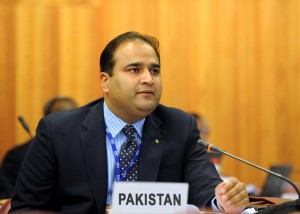
No comments:
Post a Comment